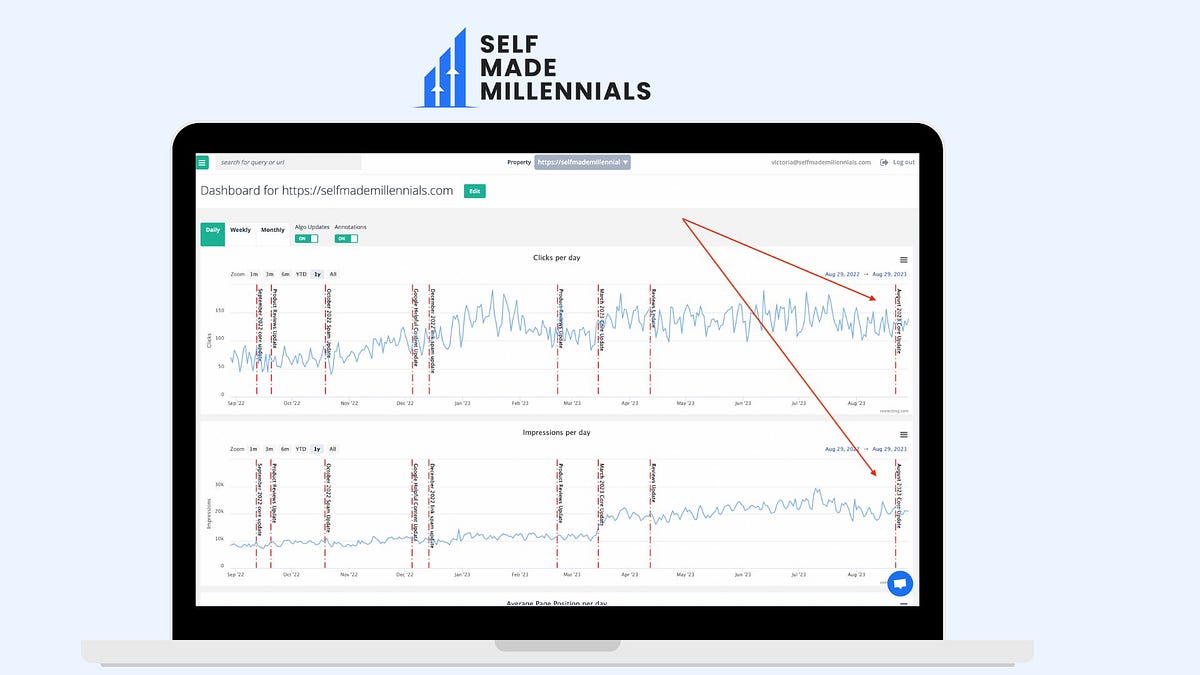- Website Growth Mastery
- Posts
- Google's update is over. Here's how my site performs 📈
Google's update is over. Here's how my site performs 📈
And what to do if your website is affected

Hi there,
How have you been doing lately?
I’m having a workation in Europe with my friends and family. 🤩
I expected March to be a calm month, but surprisingly, I’ve received many client requests.
In particular,
I sold a 12-month content writing plan to one of my new customers. 💰
And I will also be writing a sponsored article on Medium. Yaay! ✔️

Me, enjoying my workation in Europe and surprisingly managing my business on the side. :)
However, I sent you this newsletter to inform you about the recent Google algorithm updates.
In its March 5 announcement, Google emphasized its goal of reducing unhelpful, irrelevant, unoriginal content from search results.
This cleanup drive promises to remove up to 40% of low-quality websites that provide useless information and poor user experience – pages created just to match specific search queries.
Google has officially announced that it has finished implementing the algorithm updates. So, if you’ve seen significant traffic volatility in the past few days, it’s most likely the Google update.

What happened to my website
In a nutshell, nothing!
As an SEO specialist, I take care of my content quality and know how to align content (even AI-generated content) with Google’s requirements.
Here’s how my website has been performing in the past few months, considering I only published 1-2 high-quality pieces.
Due to my client's work, I don’t have enough time to grow my website. However, its performance doesn’t get worse.
In SEO, your website can rank for years as long as your content meets users' search intent!

What to do if your website is affected
Try revamping content that lost its positions!
This is one of the underrated SEO strategies I have not seen many website owners using.
The logic is simple:
Define web pages with obsolete content that lost their rankings
Prioritise web pages with business potential
Analyze the search intent for your target keyword
Conduct keyword research to discover keywords your web page does not rank for yet
Rewrite content
Republish a web page
If you follow all these steps, you’ll see rapid increases in impressions and clicks in a few days after republishing your old content. If interested, I explain the entire process of SEO content writing in this ebook.
A good question is: How much content should you rewrite?
Would 100%, 50%, or less than 50% be okay?
You can find out the answer in my case study below. 👇
Whenever you are ready
If you want to know how to grow and monetize your website, here’s how I can help you:
👉️ “SEO expert in your pocket” to get all your questions answered anytime. This is the exclusive and most affordable opportunity I’ve ever offered to work with me. Share your questions and get answers to all your questions weekly!
👉️ Grab my ebook: "How to Write Blog Posts That Hit the Google Front Page.”
👉️ Grab my “SEO Checklist for New Websites.”
Have a great day!
Victoria

Victoria Kurichenko
P.S. Have you grabbed a free bundle with 50+ high-quality resources to scale up your online business?
Check the “Action by April” bundle here.


Join the conversation